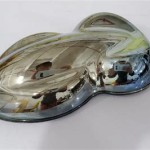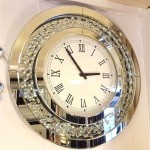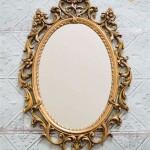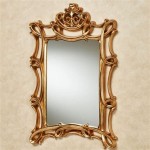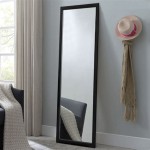Why Will a Diverging Mirror Never Produce a Real Image?
Diverging mirrors, also known as convex mirrors, possess a unique reflective surface that curves outward. This distinctive shape dictates how light rays interact with the mirror and ultimately determines the nature of the image formed. Unlike converging mirrors, which can produce both real and virtual images depending on object placement, diverging mirrors exclusively generate virtual images. Understanding the underlying principles of light reflection and the geometry of these mirrors explains why real images are an impossibility.
Key Points: Diverging Mirror Properties
- Curved outward reflective surface.
- Always produces virtual images.
- Images are always upright and diminished.
The law of reflection states that the angle of incidence, the angle at which a light ray strikes a surface, is equal to the angle of reflection, the angle at which the ray bounces off. This fundamental law governs the behavior of light rays interacting with any reflective surface, including diverging mirrors. When parallel light rays strike a diverging mirror, the curved surface causes them to reflect outwards, spreading apart or diverging. This divergence is the defining characteristic of these mirrors and the key to understanding their image formation.
Key Points: The Law of Reflection and Diverging Mirrors
- Angle of incidence equals the angle of reflection.
- Diverging mirrors cause parallel incident rays to reflect outwards.
- The reflected rays diverge, hence the name "diverging mirror".
A real image is formed when reflected light rays from an object converge at a point. This convergence allows the image to be projected onto a screen. For example, in a converging mirror, when an object is placed beyond the focal point, the reflected rays converge to form a real, inverted image. However, in the case of a diverging mirror, the reflected rays never converge. Instead, they appear to emanate from a point behind the mirror. This apparent origin of the reflected rays is where the virtual image is formed.
Key Points: Real vs. Virtual Images
- Real images are formed by the convergence of reflected rays.
- Real images can be projected onto a screen.
- Virtual images are formed by the apparent divergence of reflected rays.
- Virtual images cannot be projected onto a screen.
To understand why a diverging mirror always forms a virtual image, consider the path of light rays emanating from a point on an object placed in front of the mirror. Upon striking the mirror's surface, these rays diverge according to the law of reflection. If we trace these reflected rays backward, they appear to originate from a point behind the mirror. This point of apparent origin is where the virtual image is located. Because the reflected rays themselves never actually meet, a real image cannot be formed. The image is upright and smaller than the object, and it appears to be located behind the mirror's surface.
Key Points: Image Formation in Diverging Mirrors
- Reflected rays diverge after striking the mirror.
- Tracing reflected rays back creates an apparent point of origin behind the mirror.
- This apparent point of origin is the location of the virtual image.
- Virtual images are always upright and diminished.
The focal point of a diverging mirror is the point where parallel rays incident on the mirror appear to diverge from after reflection. This focal point is considered to be behind the mirror and is assigned a negative value. The distance from the mirror's surface to the focal point is the focal length. This negative focal length is a crucial factor in the mirror equation, which relates the object distance, image distance, and focal length. The negative focal length mathematically reinforces the fact that the image formed by a diverging mirror is always virtual and located behind the mirror.
Key Points: Focal Point and Focal Length
- Focal point is the apparent origin of reflected parallel rays.
- Diverging mirrors have a negative focal length.
- The negative focal length mathematically confirms the virtual nature of the image.
The practical applications of diverging mirrors stem from their ability to produce a wider field of view. Because they diverge light rays, they effectively shrink the reflected image, allowing a larger area to be viewed. This property is particularly useful in car side mirrors, security mirrors in shops, and at blind corners on roads, where a wider field of view is essential for safety and surveillance.
Key Points: Applications of Diverging Mirrors
- Provide a wider field of view.
- Used in car side mirrors for increased visibility.
- Employed in security and surveillance applications.
Can A Convex Mirror Form Magnified Image Quora
Can A Convex Mirror Form Real Image Quora
Can A Convex Mirror Produce Real Image

Can A Convex Mirror Produce Real Image When The Object Is Virtual And Vice Versa Concave If Yes How Will It Be Possible Why Quora

Why Can A Real Image Not Be Obtained On The Screen Using Single Diverging Lens Homework Study Com
Can A Convex Mirror Produce Real Image When The Object Is Virtual And Vice Versa Concave If Yes How Will It Be Possible Why Quora
Can A Convex Mirror Form Real Image Quora
Is It Possible For A Convex Mirror To Produce Real Image When The Object Virtual Quora

Difference Between Real Image And Virtual
When Does A Plane Mirror Produce Real Image Quora


